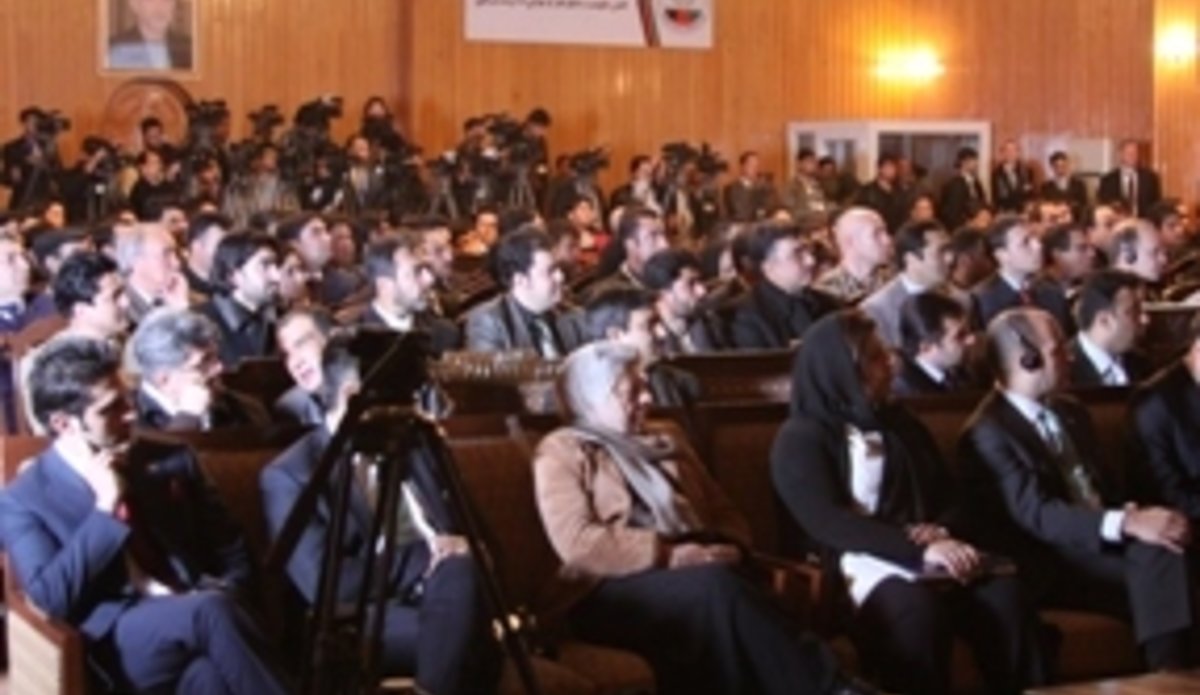Government’s media centre spotlights press freedom on second anniversary
23 January 2011 - The Afghan Government Media Information Centre (GMIC) celebrated its two year anniversary last week with a pledge to continue involving Afghan youth in its work and discussions about press freedom and access to information.
The GMIC is a “bridge between the Government, media and the people,” Hakim Asher, the Executive Director of GMIC told UNAMA News at the 18 January event in Kabul.
Cabinet ministers mingled with members of the diplomatic corps, and international and local journalists, including staff from the state-sponsored Bakhtar News Agency, Radio Kabul and Radio and Television Afghanistan (RTA) with which UNAMA has a production and broadcasting partnership.
The GMIC was established as a joint effort between the Government of Afghanistan and key international stakeholders to coordinate media-related activities and provide one channel through which information from the Government could be shared with journalists and the general public.
In his opening remarks, Asher noted the key role that the first GMIC Executive Director, Wahid Omar, had in establishing the GMIC, calling him a “catalyst for everything achieved so far.”
In the year ahead, Asher said that the GMIC plans to sharpen the abilities of government press officers through media training classes, and strengthen the GMIC’s regional presence outside of its centres in Kabul and Kandahar.
The third priority is to continue working with Afghan youth - half of the population is under 18 years of age - by strengthening the GMIC’s internship programme for senior Afghan students and recent graduates.
Out of the 80 people working at the GMIC, most are at the start of their careers with the youngest just 20 years old.
The team was lauded by US Ambassador Karl Eikenberry, who said he was ““struck by the dynamism, confidence, and dedication of the Afghan staff of professionals.”
The United States is the main donor to the GMIC, with additional support from the United Kingdom, Canada and the Netherlands.
Among the night’s other speakers, BBC Pashto Kabul editor Dawood Azami urged the Government to pay “as much attention to Afghan media as international media” while cautioning journalists to work harder to achieve balance in their coverage.
There are roughly 36 television stations, 95 radios and 800 print media throughout Afghanistan, according to the latest information provided by the GMIC. Many are privately owned by foreign and NGO sponsors.
The media boom of the past decade has brought with it new challenges for the Government, and raised questions about media ethics and censorship.
In his speech, Minister of Information and Culture Sayed Makhdoom Raheen called on authorities to investigate the case of Radio Kapisa director Hojatullah Mojadeddi, who has been detained for the past three months in eastern Afghanistan, so that “we can decide whether to love him or hate him.”
Mojadeddi was released from detention the following day. It is not clear if the Minister’s speech and the release are related.
Reporters Without Borders called Afghanistan one of the most dangerous places to work in journalism, ranking the country 147 out of 175 in its Press Freedom Index.
There have been at least 85 cases of violence against journalists since March 2009, according to Media Watch, a locally produced newsletter cited by Freedom House.
The same day as the anniversary event, an unknown assailant sprayed acid in the face of a journalist and author Razaq Mamoon in what news reports said was retaliation for politically charged writing.
The Human Rights Unit of UNAMA systematically monitors the situation of press freedom in Afghanistan.
The monitoring is done in the context of the International Covenant on Civil and Political Rights (ICCPR) adopted by the United Nations General Assembly in 1966 – of which Afghanistan has been a member since 1946. The Covenant is part of the Universal Declaration of Human Rights.
By UNAMA
Photo courtesy of GMIC
 UN
UN







